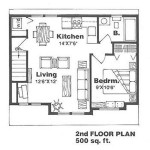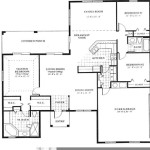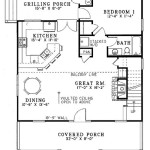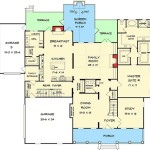Finding Your House Floor Plan: A Comprehensive Guide
Locating the floor plan for a house can be a crucial step in various situations, from planning renovations or landscaping to understanding the structural integrity of the building or simply satisfying curiosity about its original design. A floor plan provides a bird's-eye view of the house, illustrating the layout of rooms, the placement of walls, doorways, windows, and other significant architectural features. This document is invaluable for homeowners, potential buyers, contractors, and real estate professionals. However, finding this document can sometimes be a challenging task, requiring persistence and a systematic approach. This article outlines various strategies and resources available to assist in the search for a house floor plan.
The importance of a house floor plan extends beyond mere aesthetics. It serves as a blueprint for any modifications or additions to the property. A detailed floor plan can help architects and contractors accurately estimate material costs, plan construction phases, and ensure compliance with building codes. Moreover, a floor plan can highlight potential issues with the house's design, such as poor traffic flow, inadequate storage, or inefficient use of space. For historical properties, a floor plan can offer insights into the building's evolution and how it has been adapted over time.
Where to Begin Your Search
The initial stage of finding a house floor plan involves exploring the most readily accessible resources. Often, the floor plan is already within the homeowner's possession or can be easily obtained from sources related to the property's history. Start with a thorough search of personal records. This includes:
Mortgage Documents: Original mortgage documents sometimes contain floor plans as they are used to assess the property's value and layout.
Closing Documents: These documents, received at the time of purchase, often include a copy of the floor plan, especially in newer constructions or planned communities.
Home Improvement Project Records: If previous renovations or additions were undertaken, the contractor or designer may have provided a copy of the updated floor plan.
Original Sales Brochure: If the house was purchased new, the original sales brochure from the builder might contain a floor plan.
If a physical search of personal records proves unsuccessful, the next step involves contacting relevant organizations and agencies that may have a record of the floor plan. This might include:
The Builder or Developer: If the house is relatively new or part of a development, contacting the original builder or developer is a logical step. They may have copies of the floor plans for all the houses in the development.
The Architect: If the house was custom-built or significantly renovated by an architect, their firm would likely possess a floor plan.
The Local Building Department: Building departments typically archive building permits and associated documents, including floor plans. These records are usually accessible to the public, although access procedures and fees may vary.
The County Recorder's Office: This office records property deeds and other legal documents, which may include floor plans, especially if the house is part of a condominium or planned unit development.
The Assessor's Office: While the assessor's office primarily focuses on property valuation for tax purposes, they may have basic floor plans or sketches of the house on file.
Navigating Public Records and Archives
Accessing public records requires understanding the specific procedures and protocols of each agency. Building departments and county recorder's offices often maintain online databases that allow users to search for documents by address, owner's name, or parcel number. These databases may provide digital copies of floor plans or, at the very least, indicate whether a floor plan exists in their archives. If online access is not available, a visit to the agency's physical location may be necessary.
When requesting documents from a government agency, be prepared to provide specific information about the property, such as its address, legal description, and the owner's name. Agencies may charge fees for document retrieval and copying. It is also important to understand the agency's policies regarding the release of confidential information. While floor plans are generally considered public records, some details, such as mechanical systems layouts, may be restricted for security reasons.
Historical societies and local libraries can also be valuable resources for finding floor plans, especially for older houses. These institutions often maintain archives of historical documents, including architectural drawings and property records. Contacting these organizations and inquiring about their holdings related to the specific property or neighborhood can sometimes lead to the discovery of a floor plan.
It is important to manage expectations when digging into public records. There's no guarantee that a floor plan exists. Houses built before the widespread adoption of formal building codes may never have had a detailed floor plan created. Older records might be incomplete, damaged, or difficult to access. However, persistence and a thorough search of all available resources can often yield positive results.
Alternative Methods for Creating a Floor Plan
In instances where an existing floor plan cannot be located, it becomes necessary to create one. This can be accomplished through several methods, ranging from manual measurement and sketching to using professional design software or hiring a professional to conduct a survey.
Manual Measurement and Sketching: This method involves carefully measuring the dimensions of each room and drawing a scaled representation of the house's layout. Accuracy is paramount in this process. Using a laser measuring tool can significantly improve the precision of the measurements. It's also crucial to accurately record the location of doors, windows, walls, and other fixed features. This method is suitable for simple house layouts and for creating a basic floor plan for personal use.
Using Floor Plan Software: Several software programs are available that simplify the process of creating floor plans. These programs often offer features such as pre-drawn symbols for doors, windows, and furniture, as well as tools for calculating areas and dimensions. Some programs also allow users to import photographs or scans of existing sketches to serve as a template for the new floor plan. This method provides a more professional-looking and accurate floor plan compared to manual sketching. Popular options include SketchUp, AutoCAD Architecture, and RoomSketcher. Many of these offer free trials or basic versions to allow homeowners to experiment before committing to a paid subscription.
Hiring a Professional: For complex house layouts or when a highly accurate floor plan is required, hiring a professional architect, surveyor, or interior designer is the most reliable option. These professionals possess the expertise and equipment necessary to create precise and detailed floor plans. Surveyors use specialized tools, such as total stations and GPS devices, to accurately measure the boundaries of the property and the location of all structures on the site. Architects and interior designers can then use this survey data to create a comprehensive floor plan that includes all architectural details and dimensions. This method is the most expensive but also provides the highest level of accuracy and detail.
When creating a floor plan, whether manually or with software, it's essential to consider the scale. Scale refers to the ratio between the dimensions on the floor plan and the actual dimensions of the house. A common scale for residential floor plans is 1/4 inch = 1 foot, meaning that every 1/4 inch on the plan represents 1 foot in the actual house. Using a consistent scale ensures that the floor plan is an accurate representation of the house's layout.
Key Considerations for Accuracy and Detail
Regardless of the method used to create a floor plan, accuracy and detail are crucial. A floor plan that is inaccurate or incomplete can lead to errors in construction estimates, design plans, and other important decisions. To ensure accuracy, take multiple measurements of each room and feature, and double-check all calculations. Pay close attention to the location of load-bearing walls, as these walls cannot be removed or altered without structural reinforcement. Note the location of electrical outlets, switches, and plumbing fixtures, as these will be important for any future renovations.
In addition to basic room dimensions and wall locations, a comprehensive floor plan should also include details such as:
- Window and door sizes and types
- Ceiling heights
- Location of stairs and elevators
- Location of fireplaces and chimneys
- Details of built-in cabinets and shelving
- Location of mechanical systems (e.g., HVAC, plumbing, electrical panels)
Including these details will make the floor plan more useful for a variety of purposes, from planning furniture arrangements to designing complex home improvement projects. For historical properties, it may also be beneficial to document any unique architectural features or details that contribute to the house's character.
Finally, it is important to remember that a floor plan is a dynamic document that may need to be updated over time. As renovations or additions are made to the house, the floor plan should be revised to reflect these changes. Maintaining an accurate and up-to-date floor plan will ensure that it remains a valuable resource for years to come.

9 Ways To Find Floor Plans Of An Existing House Blueprints Archid
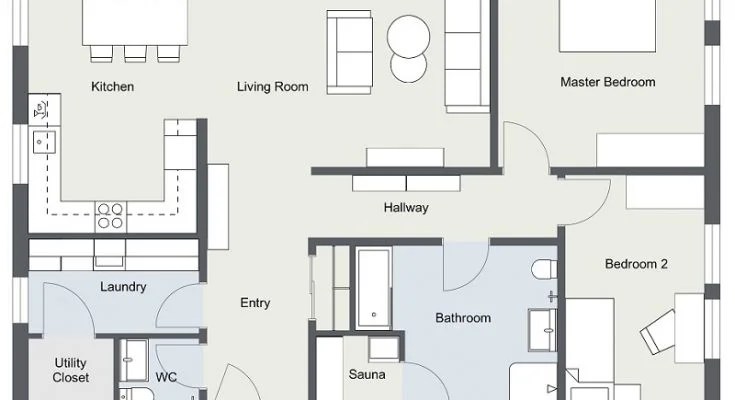
How To Find The Original Floor Plans For Your House

Where You Can Buy House Plans Live Home 3d

How To Read A Floor Plan With Dimensions Houseplans Blog Com

How To Get Blueprints Of Your House

How To Read A Floor Plan With Dimensions Houseplans Blog Com

House Plans How To Design Your Home Plan

House Plans How To Design Your Home Plan

How To Read A Floor Plan With Dimensions Houseplans Blog Com

House Plans How To Design Your Home Plan

